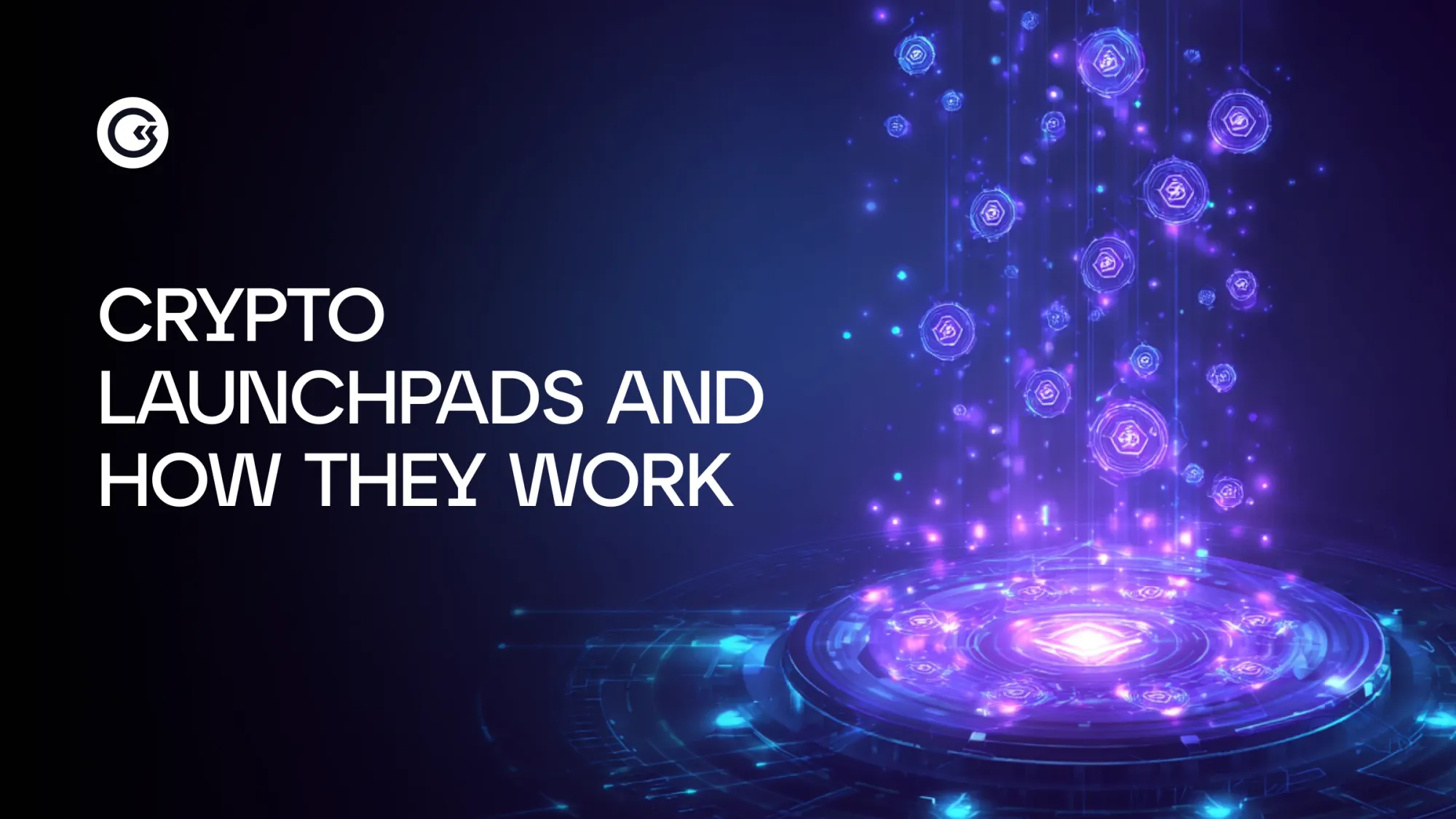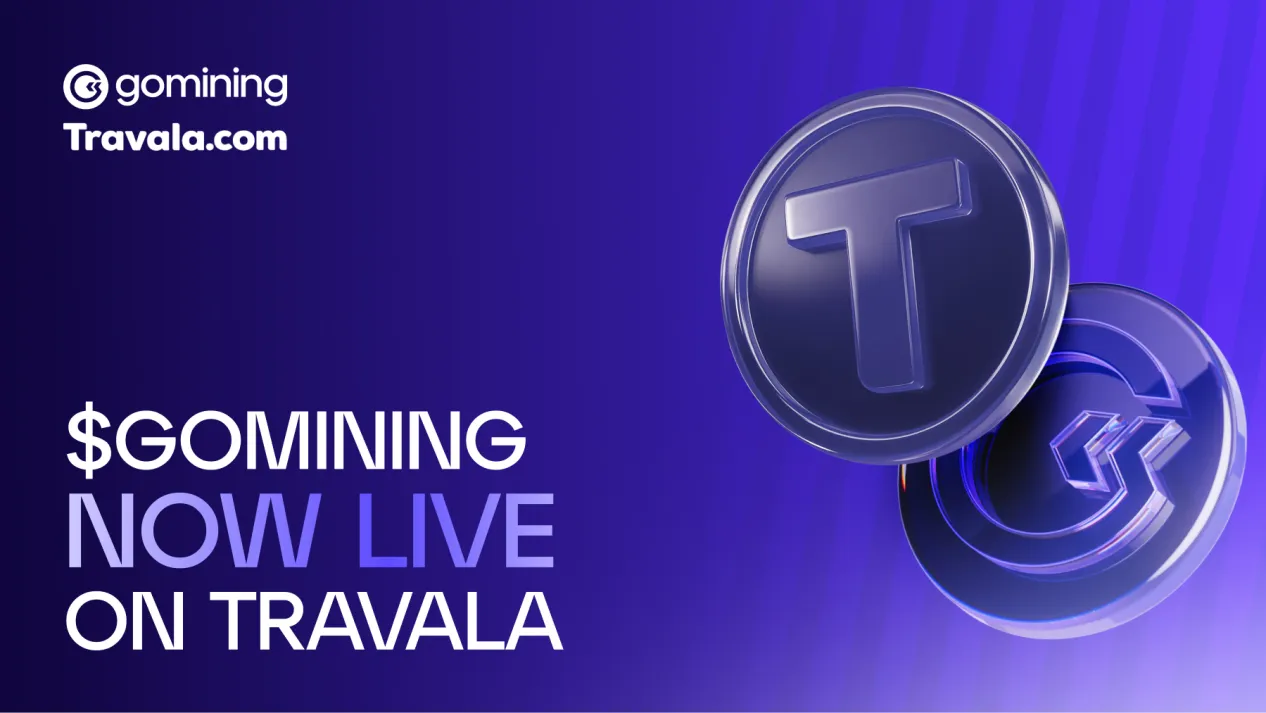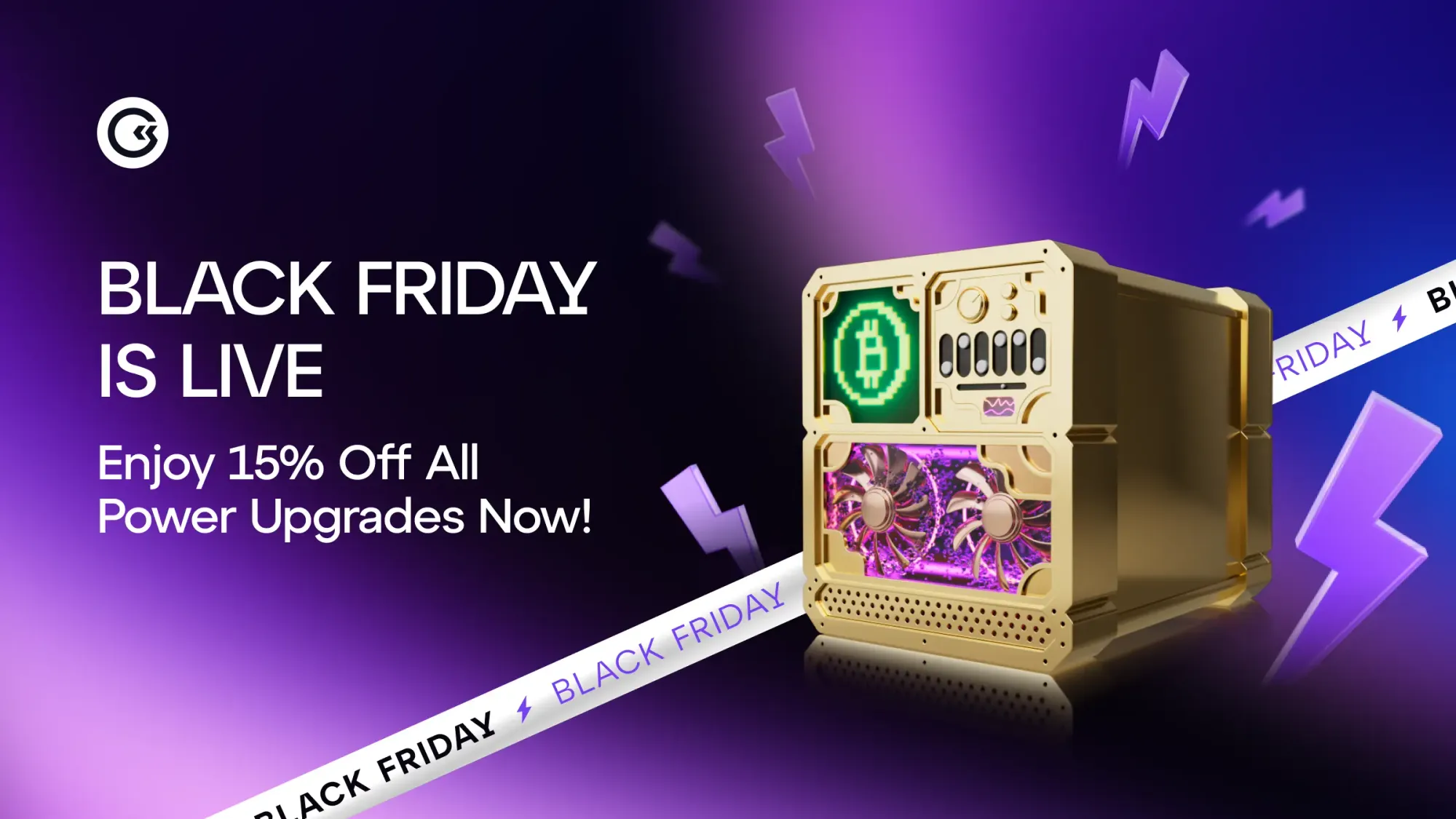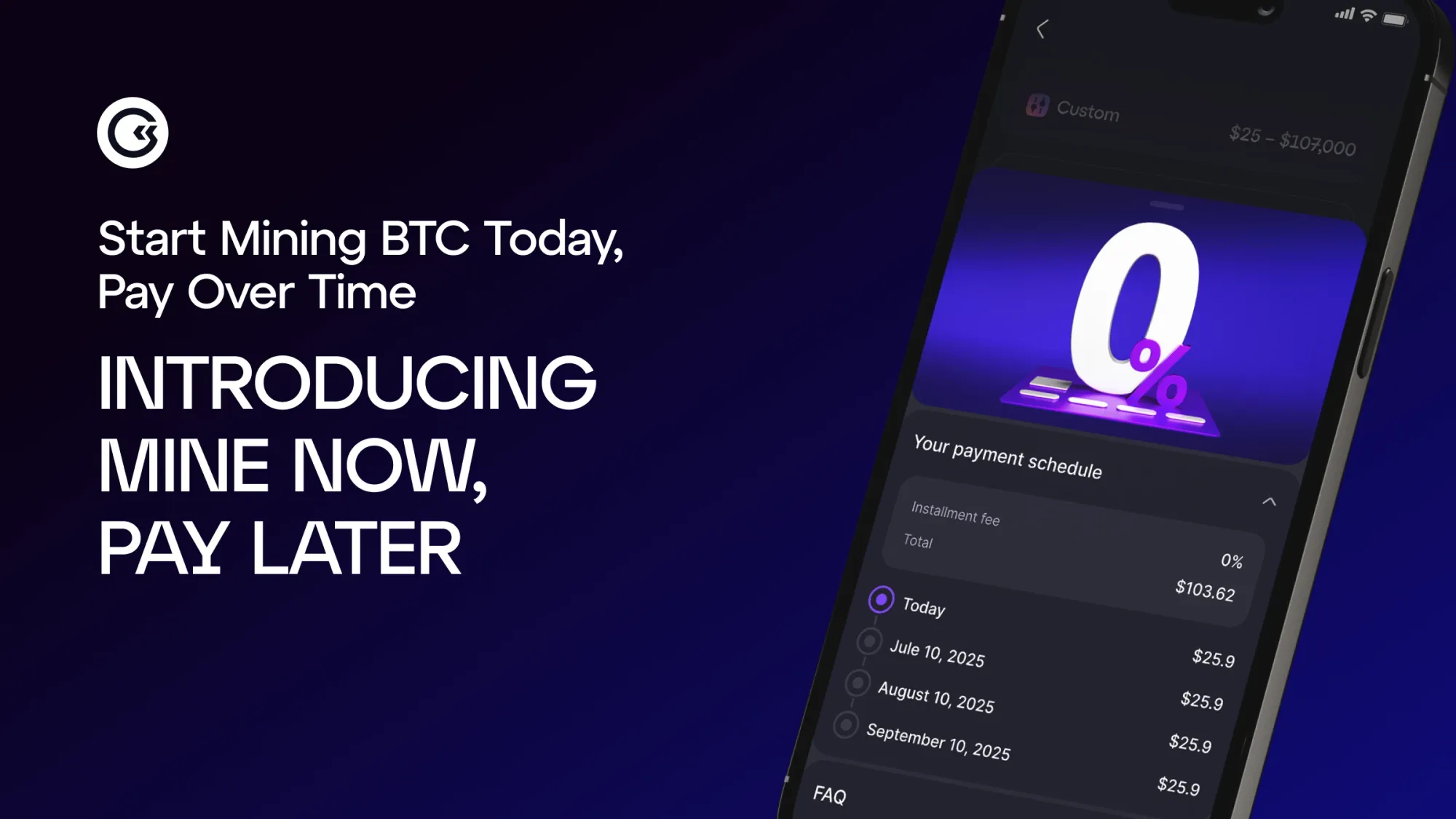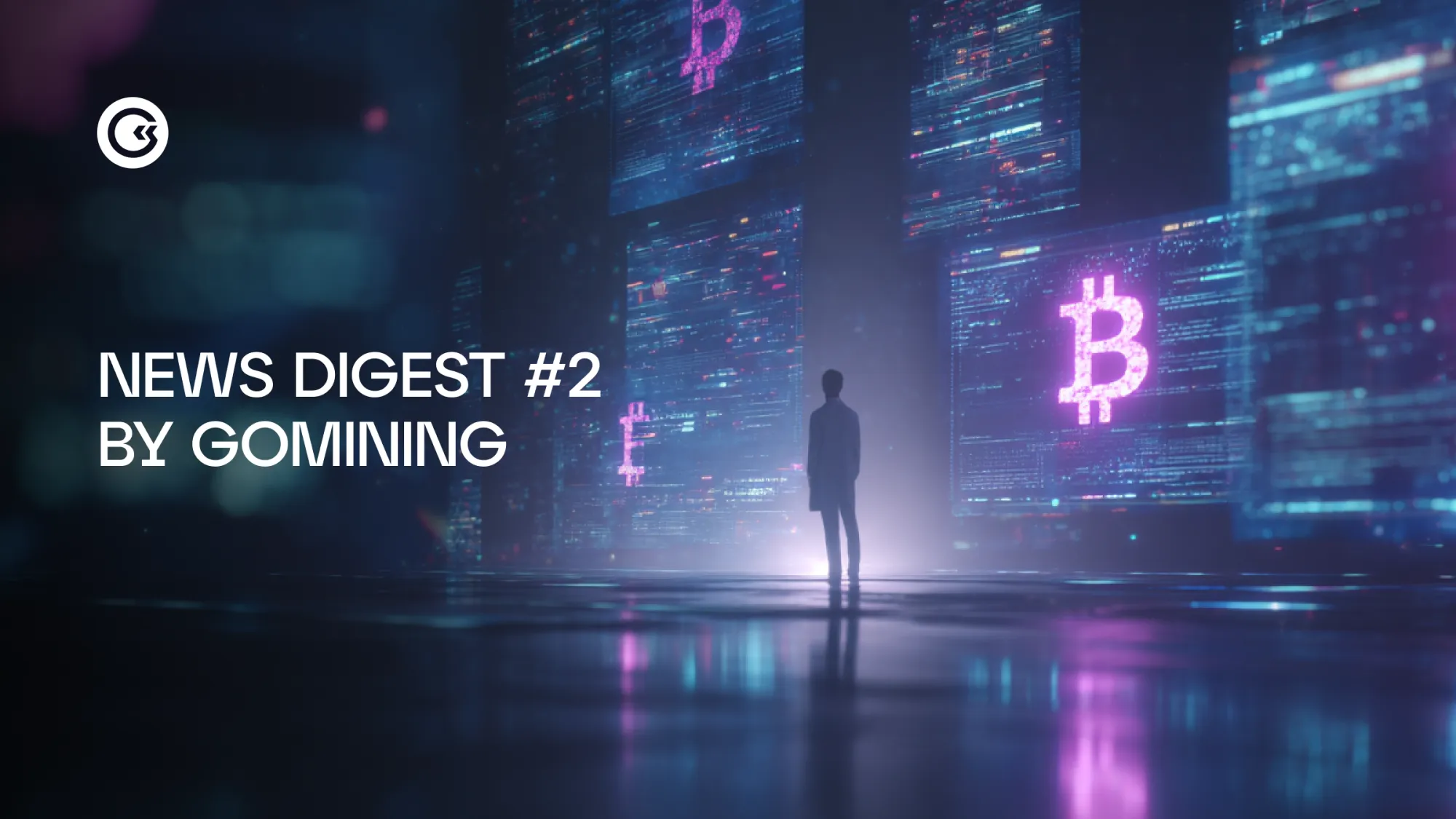The crypto market is developing fast. New gaming projects, DeFi apps, neural-network protocols, wallets, and services for traders appear all the time. They all want to grow, and every fresh project needs its first funding.
In traditional business, a startup goes to venture funds or private investors. But that’s a long road: negotiations can stretch for months, and not everyone has an angel investor on speed dial.
Crypto offered its own approach — a structured platform where a project can raise initial capital, and ordinary people can become early participants.
That’s how launchpads emerged: as a tool connecting young projects with people who want to join early. For a beginner, a launchpad serves as a simple and understandable entry point into the very early stages of a project. As a side bonus — every project shares a portion of its own token with early launchpad participants.
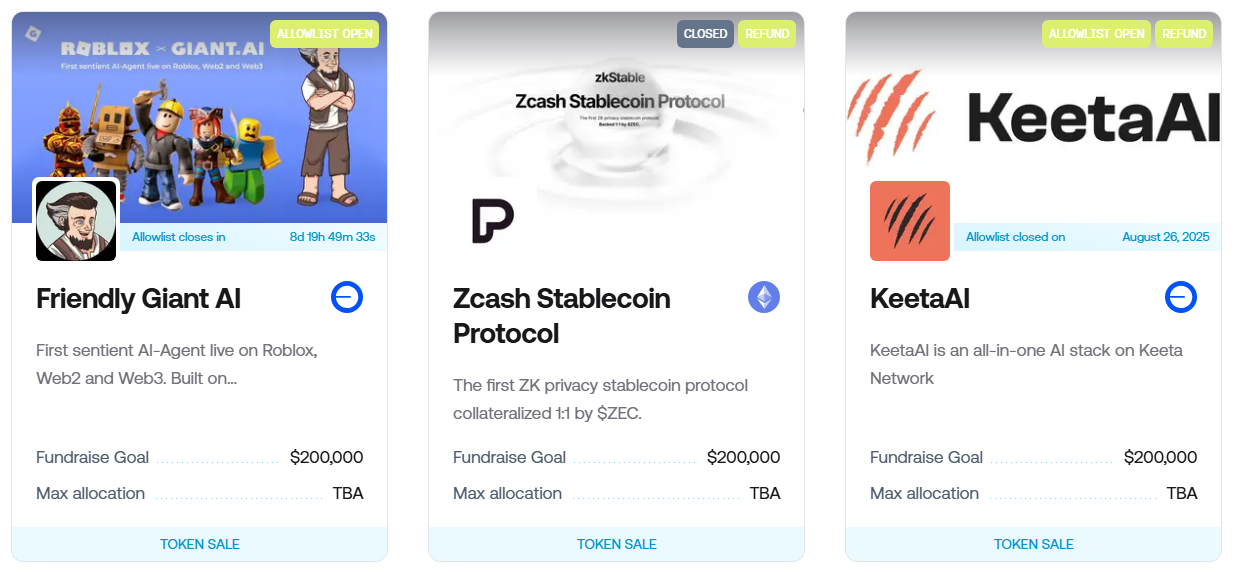
A launchpad page on polkastarter.com
A launchpad works like a “pre-order” or “early access” platform, like Kickstarter for crypto, Steam Early Access, or buying a concert ticket months in advance.The project receives its first development funds, and users get the chance to support the project early, and get perks.
What a Launchpad is and how it works on a basic level
Imagine a familiar situation. There’s a small group of developers making a game. The story is ready, the first sketches exist, but they don’t have enough money for full production.
To avoid shutting the project down, they start selling early access — you pay now, and get the full game later. Steam does the same with its Early Access badge: players support developers before the game is finished.
Now let’s move this idea into crypto. There are also “indie developers” in our industry — only instead of games, they build:
● wallets● decentralized exchanges● tools for apps● blockchain-based games● data infrastructure tools● AI-powered products
And they all face the same challenge: they need money to turn an idea into a working product. A launchpad solves this cleanly and within clear rules. The team presents the concept, explains why they need a budget, and shows the plan. People support it. As a “thank-you bonus,” the launchpad participants receive the project’s tokens before anyone else .
That’s it, the simplest definition of a launchpad — like a Kickstarter, but for crypto; a platform for early project support through a fixed-price token sale.
How launching projects on a Launchpad works
When a project comes to a launchpad, it has to present itself twice: first to the launchpad owners, and then to the public. It’s similar to a musician releasing a demo track on Bandcamp and saying: “Here’s what we’re making, here’s how it will sound, and here’s what we need the money for.”
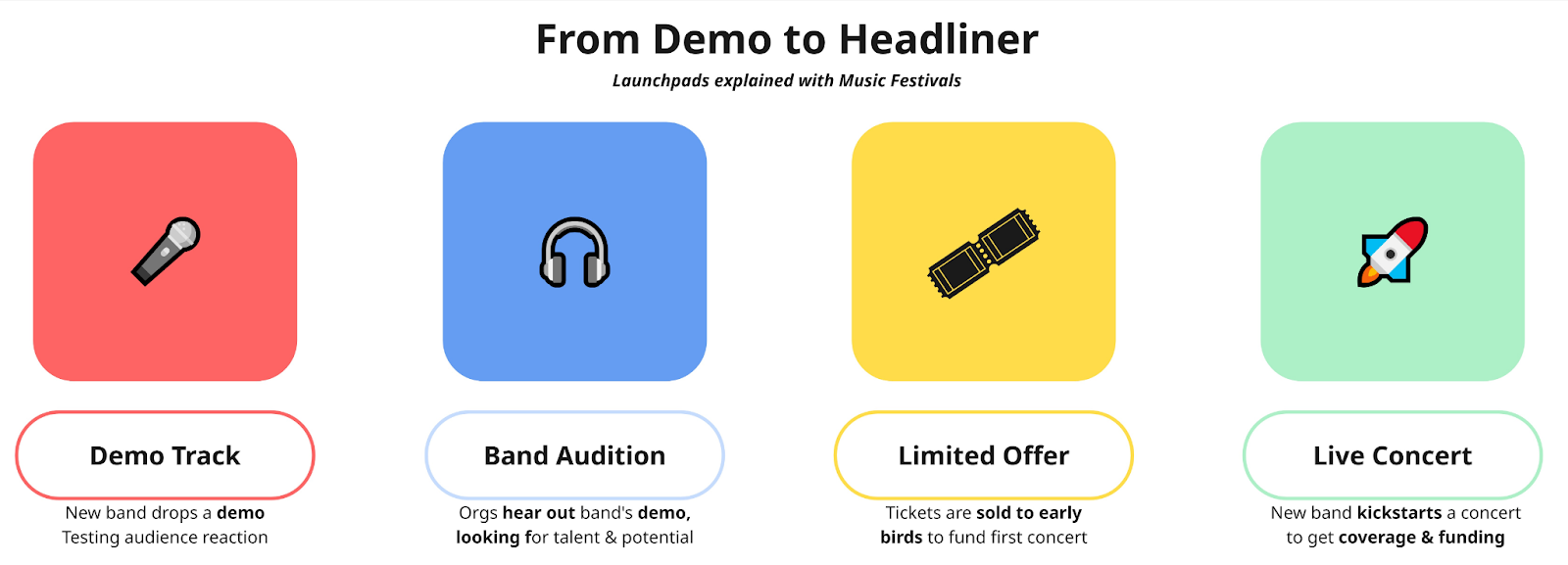
Example of how a launchpad works with music sales
The launchpad acts like an organizer: it checks that the team is real, that the product exists at least in some early stage, and that the tokenomics isn’t thrown together in five minutes. It acts as a filter that removes the most obvious low-quality projects.
After the review, the platform sets a date for the “pre-sale” of the token. It shows in advance:
● the price● the total amount of tokens available● how much the project wants to raise● when participants will receive their tokens● where the audit is conducted (for example, on Certik)
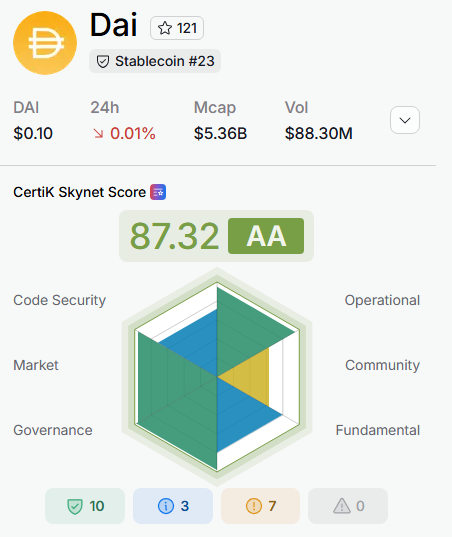
Source: skynet.certik.com
When the sale day arrives, people contribute funds — usually USDT or USDC, the “crypto equivalents” of dollars. The money gets locked. After the sale, the project receives the funds for development, and users receive their tokens. Later the token appears on exchanges, and from that moment the market decides its price.
If you compare this to everyday life, it’s like buying a festival ticket six months in advance when they are cheap. You buy it not because you’re certain the festival will be perfect, but because you want to be among the first and trust that the organizers will deliver.
The logic is the same.
Why projects need launchpads
When a team is just starting a crypto project, they usually face two big problems: they have no money and no audience. A launchpad solves both at once — that’s why it has become so popular. Essentially, a launchpad is needed for four things.
1. To get money right away, not “someday later.” To grow a product, you need resources: developers, audits, servers, and marketing. But before launch, a project usually has no stable income. A launchpad allows it to raise first investments quickly and in one structured pool, within a day or a week.
It’s similar to crowdfunding: you present an idea, people believe in it, and buy tokens early.
2. To gather the first few thousand people who will follow its development. One of the hardest tasks for a startup is attracting its first real users — those who read updates, test releases, and give feedback.
A launchpad brings an audience automatically, because everyone who joins the pre-sale wants to know what happens next and how the token price behaves. Instead of collecting users one by one, the project receives a ready-made active community.
3. To get social proof that the product is needed. Trust matters in crypto. When people see that:
● the project passed the launchpad’s review● it was accepted for a pre-sale● it raised funds● it attracted a live audience
It becomes a signal: “Okay, the team is real, the idea isn’t empty, other people have already joined.” This kind of confirmation makes later marketing much easier.
4. To enter exchanges with awareness, not from zero. When a project reaches an exchange through a launchpad, it already has:
● a name● an audience● first token holders● a certain level of trust
This increases the chances that the exchange will approve the listing — and that users will notice the token on the first days of trading. Without this, a new crypto project often looks like “a token created yesterday that no one knows about.”
A real-life analogy on how launchpads work
Imagine a seller who makes a great product but sells it from a tiny booth hidden in a backyard. The product is excellent, but hardly anyone buys it — simply because no one knows it exists.
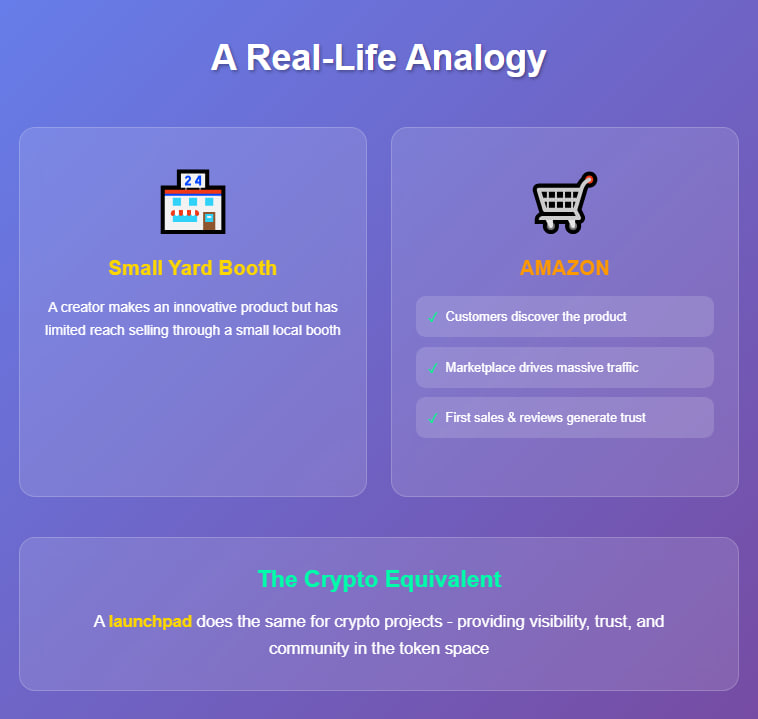
Example of a product on Amazon
When it appears on Amazon, everything changes:
● people see it● the marketplace brings traffic● first orders and reviews appear● the product comes to life
A launchpad does the same for a crypto project — but with tokens. It gives visibility, users, and early sales in one place.
Why ordinary users need launchpads
For someone discovering this topic for the first time, a launchpad is a chance to:
● join a project at the very beginning (the same way early Instagram users joined long before it became huge)● invest small amounts and watch how the project evolves● receive tokens at a fixed price before they appear on exchanges
The easiest comparison is pre-ordering a new smartphone. You buy it earlier, sometimes cheaper, sometimes with bonuses. Is there a risk? Of course — you haven’t seen the final version yet. But if you trust the brand, you go for it.
What it looks like for someone joining for the first time
Imagine opening the page of a new project. You see a card with:
● the project description● a short prototype video● links to documents● a link to the audit● the token price● the launch date
You read through everything, check the project’s website, skim their Twitter, look at discussions. You decide to invest a small amount — say, $100. The platform locks your contribution. A few days later, your tokens arrive.

A launchpad project page on coinlist.co
At that moment, you begin to understand what “early stage” really means. It’s not trading, not speculation, not guessing the price. It’s participation in something that is only just taking shape.
Risks: what you should know before participating
Early token sales look like a convenient way to support a project — and they are — but they always carry risk. This is not a flaw of launchpads; this is how all early-stage financing works when the product is not yet finished. Below are four factors worth understanding in advance.
1. The project may never reach its final version. When a user joins through a launchpad, they support a project at the idea or prototype stage. The team is only beginning its work, plans may change, deadlines may shift, and some features may never appear in the final product. Traditional crowdfunding platforms see this often: sometimes developers simply don’t have enough resources, and the product never gets released. Crypto works the same way. If a project stops developing, the token loses its meaning — and therefore its value.
2. The token price may drop after listing. Even with early access, post-listing prices don’t always rise. Many participants sell tokens immediately after receiving them — usually to lock in a quick gain. If sellers outnumber buyers, the price starts falling. This is a market effect, not a sign that the project is bad. Some tokens recover later as the product gains traction, but the first days can be highly volatile.
3. Possible technical issues in smart contracts. Tokens run on smart contracts — code that controls issuance and distribution. Even with careful development, bugs can exist: from incorrect token allocation to vulnerabilities that attackers could exploit. That’s why projects order external audits from companies like Certik. Audits reduce risks but — as in any software development — can’t eliminate them entirely.
4. The influence of market cycles. Token prices often depend not only on the project itself but on the broader market environment. During downturns, investors prefer stablecoins or more predictable assets, and demand for new tokens declines. Even strong teams feel the pressure when the overall market corrects. This is a normal cycle that repeats every few years and affects everything — from major coins to fresh launchpad projects.
Why all this works better today than 3–5 years ago
The years 2024–2025 changed the industry significantly:
● launchpads became multichain, reducing fees● audits became almost mandatory● vesting became the norm — tokens are rarely unlocked all at once● exchanges tightened their project review policies
In simple words, the system has become much closer to a “mature market.”
Why interest in launchpads keeps growing
Every cycle brings new technologies. In 2017 it was ICOs. In 2020 — DeFi. In 2021 — GameFi and NFTs. In 2024–2025 — AI-integrated crypto tools, new L2 networks, real-world-assets platforms, and ecosystem projects tied to major blockchains.
All of them face the same question: Where do we find our first users and resources?
A launchpad gives them both. And that’s why interest in this model remains stable from cycle to cycle — tools change, formats update, but the need for a structured early stage stays the same.
Summary
A launchpad is not a shortcut to success and not a guarantee of growth. It is simply a clear and convenient format where a project can present itself, raise early funding, and gather its first supporters — and where users can join a young idea at the moment it begins taking shape.
The model is familiar, almost everyday: early access, pre-orders, and the first wave of public attention. Only now it exists in digital form and uses tokens instead of tickets. The logic hasn’t changed — only the medium has.
Telegram | Discord | Twitter (X) | Medium | Instagram
FAQ
1. Is a launchpad the same as an exchange? No. A launchpad is a platform for early-stage fundraising.
2. What does it resemble in everyday life? A pre-order, early access, or buying tickets well in advance.
3. Why don’t projects release all tokens at once? To avoid sharp price drops — this is called vesting.
4. Can someone lose money? Yes. Just like with any early-stage startup financing.
5. How much do you need to participate? Often from as little as $10–20. Sometimes more — it depends on the platform.
6. Which launchpads exist? There’s a lot of notable platforms with Launchpads, for example, a GoMining Launchpad.
7. Is this a “fast profit” tool? No. This is early participation with real risks.
8. How do you evaluate a project? Read the documents, check the audit, and look at the team.
November 26, 2025


